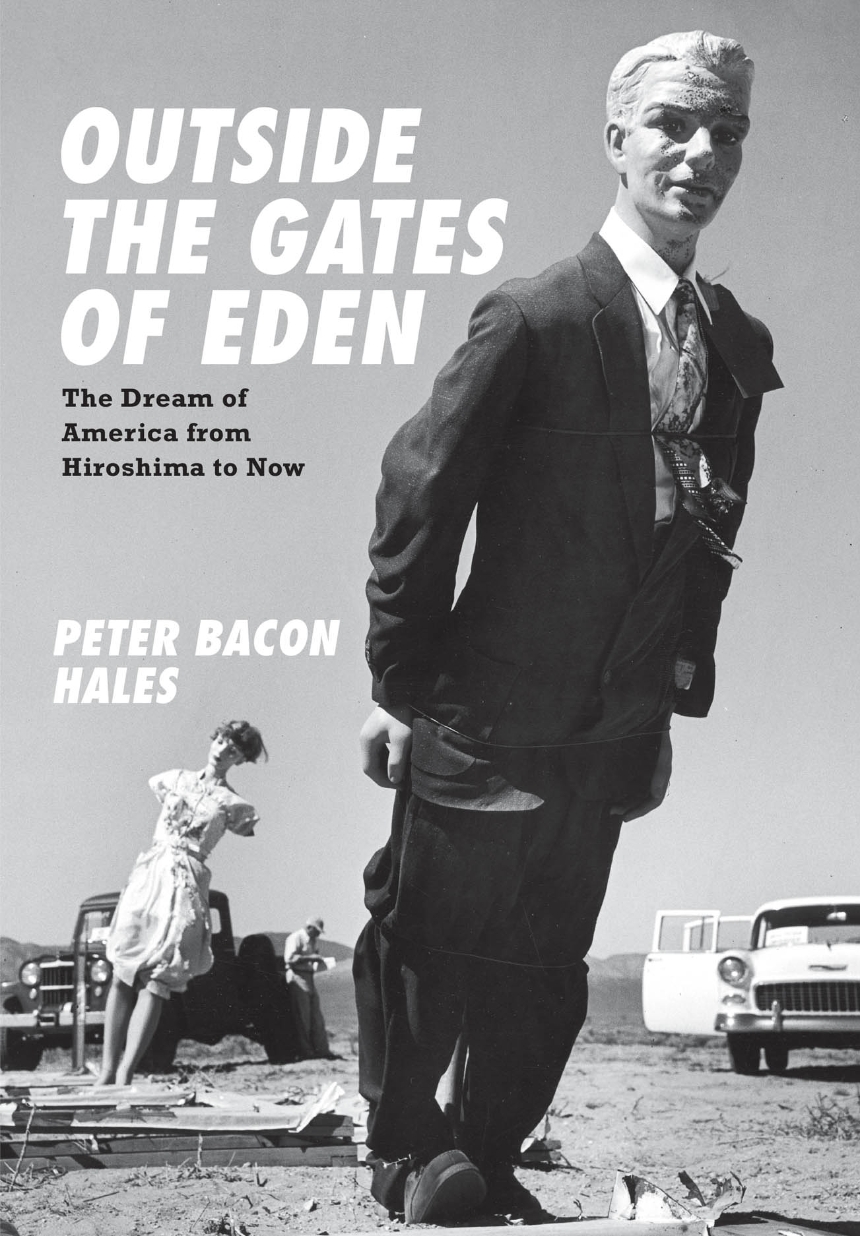Outside the Gates of Eden
The Dream of America from Hiroshima to Now
Publication supported by the Neil Harris Endowment Fund
Exhilaration and anxiety, the yearning for community and the quest for identity: these shared, contradictory feelings course through Outside the Gates of Eden, Peter Bacon Hales’s ambitious and intoxicating new history of America from the atomic age to the virtual age.
Born under the shadow of the bomb, with little security but the cold comfort of duck-and-cover, the postwar generations lived through—and led—some of the most momentous changes in all of American history. Hales explores those decades through perceptive accounts of a succession of resonant moments, spaces, and artifacts of everyday life—drawing unexpected connections and tracing the intertwined undercurrents of promise and peril. From sharp analyses of newsreels of the first atomic bomb tests and the invention of a new ideal American life in Levittown; from the music emerging from the Brill Building and the Beach Boys, and a brilliant account of Bob Dylan’s transformations; from the painful failures of communes and the breathtaking utopian potential of the early days of the digital age, Hales reveals a nation, and a dream, in transition, as a new generation began to make its mark on the world it was inheriting.
Full of richly drawn set-pieces and countless stories of unforgettable moments, Outside the Gates of Eden is the most comprehensive account yet of the baby boomers, their parents, and their children, as seen through the places they built, the music and movies and shows they loved, and the battles they fought to define their nation, their culture, and their place in what remains a fragile and dangerous world.
Born under the shadow of the bomb, with little security but the cold comfort of duck-and-cover, the postwar generations lived through—and led—some of the most momentous changes in all of American history. Hales explores those decades through perceptive accounts of a succession of resonant moments, spaces, and artifacts of everyday life—drawing unexpected connections and tracing the intertwined undercurrents of promise and peril. From sharp analyses of newsreels of the first atomic bomb tests and the invention of a new ideal American life in Levittown; from the music emerging from the Brill Building and the Beach Boys, and a brilliant account of Bob Dylan’s transformations; from the painful failures of communes and the breathtaking utopian potential of the early days of the digital age, Hales reveals a nation, and a dream, in transition, as a new generation began to make its mark on the world it was inheriting.
Full of richly drawn set-pieces and countless stories of unforgettable moments, Outside the Gates of Eden is the most comprehensive account yet of the baby boomers, their parents, and their children, as seen through the places they built, the music and movies and shows they loved, and the battles they fought to define their nation, their culture, and their place in what remains a fragile and dangerous world.
496 pages | 105 halftones | 7 x 10 | © 2014
Geography: Cultural and Historical Geography
History: American History
Reviews
Table of Contents
An Introduction
Chapter 1: The Atomic Sublime
Chapter 2: Bombing the West, 1951
Chapter 3: Tracking Shot: Miracle on 34th Street and the Birth of an Atomic America
Chapter 4: Looking at Levittown
Chapter 5: Levittown’s Palimpsest: Colored Skin
Chapter 6: Mr. Levitt’s Television
Chapter 7: The Incredible Exploding House, Yucca Flat, Nevada, March, 1953
Chapter 8: Lucy!
Chapter 9: Technologies of Space and Place, 1962
Chapter 10: Two Satellites, 1962
Chapter 11: Portable Communities: Radio, 1962
Chapter 12: Dylan’s America
Chapter 13: Hendrix on Mt. Pisgah
Chapter 14: Counter-Landscapes
Chapter 15: Retreating to Utopia
Chapter 16: Pong versus Computer Space, 1972
Chapter 17. Simerica
Acknowledgments
Notes
Index